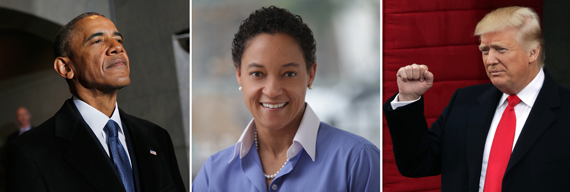Trending
Top regional center chief says Obama’s EB-5 tweaks would decimate program
“I think you would see as much as a 90 percent dropoff in demand.”

Just before President Obama left office, the Department of Homeland Security proposed some serious rule changes to the EB-5 visa program, which awards green cards to foreign nationals investing in job-creating U.S. projects. The government currently gives out 10,000 of these visas a year, the overwhelming majority of them to Chinese investors investing in real estate development projects.
In the wake of a number of scandals related to fraudulent investment activity, dirty money, and skepticism about how many jobs the program really creates, the Obama administration proposed raising the minimum investment threshold to more than double what it is now, shallowing the pool of eligible investors.
While some advocates of the program have been quiet about what those changes might mean, Angelique Brunner, head of Washington’s EB5 Capital regional centers and spokesperson for the EB-5 Investment Coalition, a major lobbying group, said the proposed rules would spell the end of the program as we know it.
“Undoubtedly the numbers in the regulations will kill the the program,” Brunner told The Real Deal. “The market cannot bear those numbers… I think you would see as much as a 90-percent dropoff in demand.”
In areas with high unemployment, DHS wants to raise the minimum project investment to $1.35 million from $500,000, and in areas with low to average unemployment, the rules propose moving the threshold to $1.8 million from $1 million. Another major change would be putting the federal government in charge of designating what qualifies as a high-unemployment area, ending the practice of redrawing census maps to allow areas such as Hudson Yards to be designated high-unemployment. Critics of EB-5 have said the practice is akin to gerrymandering.
Enter President Trump. Brunner said the new administration understands the importance of the program in helping it reach its job-creation goals, and mentioned Jared Kushner’s own use of EB-5 for a project in New Jersey as evidence of that.
“Mr. Trump’s family has used the EB-5 program successfully, so they do have personal experience with the success of the program,” she said. “This administration is really focused on job creation. We expect that focus to align well with the goals and impact of the EB-5 program.”
Despite the administration’s recent travel ban on citizens of seven majority-Muslim countries, Brunner said the EB-5 community has received “no negative messaging from the new administration” on the EB-5 issue.
“Our point is that there is no competition between national security and job creation,” she said.
Estimates of how many jobs are created by EB-5 vary wildly. A recent study by the Chamber of Commerce found that EB-5 projects active in just 2012 and 2013 created nearly 175,000 jobs. But the Bipartisan Policy Center’s study from September 2015 pegged the total number of jobs created between 1992 and 2015 at just 77,150.
If the DHS’ proposed regulations go through, aspiring investors are likely to put their money into other Western countries such as Canada, which is considering a revival of a similar immigration program, Brunner said.
EB-5 stakeholders have until April to weigh in on DHS’ proposed rules. Meanwhile, it’s up to Congress to pass a long-term reauthorization of EB-5 or it will officially sunset that same month. Last month, senators Diane Feinstein (D-CA) and Chuck Grassley (R-IA) introduced a bill to abolish the program, but EB-5’s considerable support in both houses means it’s not expected to gain much traction.
Some of the country’s biggest developers have spent large sums on lobbying efforts to keep EB-5 as-is. Related Companies, for example, which has raised $600 million in EB-5 funds for Hudson Yards, spent over $1.4 million in lobbying for the program since January 2015, the Wall Street Journal reported. Other builders who’ve lobbied for the program include Forest City Ratner, Silverstein Properties, and CIM Group.




